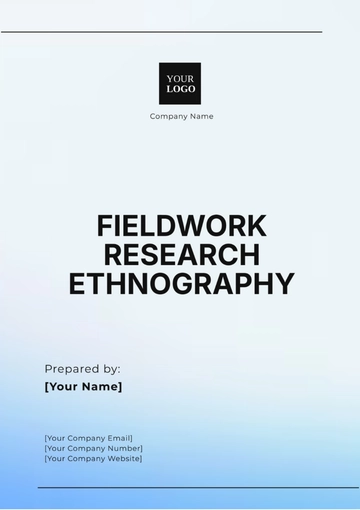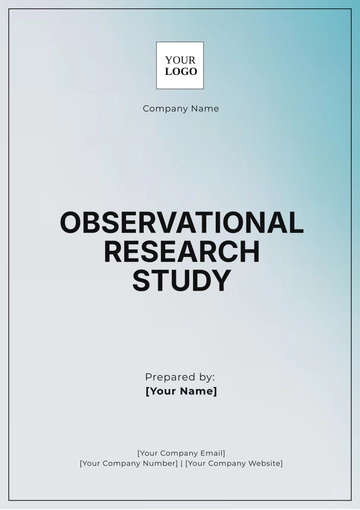Academic Business Research
Introduction
This Academic Business Research paper, conducted by [YOUR NAME] for [YOUR COMPANY NAME], delves into the theoretical advancements in business strategy. The aim is to enhance our understanding of strategic models and frameworks, providing valuable insights for both academic research and practical business applications. This study evaluates current theories, proposes refinements, and explores their implications for organizational effectiveness and competitive positioning.
Research Title: Theoretical Development in Business Strategy
Researcher: [YOUR NAME]
Company: [YOUR COMPANY NAME]
Date: August 15, 2050
Abstract
The purpose of this research is to contribute to the theoretical development of business strategy by evaluating existing frameworks and proposing a novel theoretical model. Through a systematic analysis of contemporary theories and empirical data, this study aims to offer refined insights that enhance strategic decision-making and organizational performance.
Literature Review
This section reviews key theoretical frameworks in business strategy:
Resource-Based View (RBV): The RBV emphasizes the importance of internal resources and capabilities in achieving competitive advantage. Recent developments have expanded the RBV to include dynamic capabilities, which focus on how organizations adapt and reconfigure resources in response to changing environments.
Porter’s Five Forces Model: Porter’s model remains a cornerstone in strategic analysis. However, contemporary research has critiqued its static nature and proposed modifications to account for rapid technological changes and the rise of digital platforms.
Blue Ocean Strategy: This approach advocates for creating uncontested market spaces, offering a strategic alternative to competing in saturated markets. New studies have extended this concept to include digital and service-oriented industries, highlighting its relevance in the current business landscape.
Dynamic Capabilities Theory: This theory explores how firms develop and utilize capabilities to sense and respond to environmental changes. Recent advancements have focused on the integration of AI and big data analytics in enhancing dynamic capabilities.
Methodology
The research employs a mixed-methods approach:
Case Studies: Detailed case studies of three organizations employing innovative business strategies were conducted. These include TechNex, GreenVista, and RetailSphere, each representing different industry sectors.
Expert Interviews: Interviews with five industry experts were carried out. Experts included strategic consultants, business academics, and senior executives from Fortune 500 companies. The interviews provided qualitative insights into the practical application and evolution of strategic theories.
Data Analysis: Quantitative data was collected through surveys distributed to 100 mid-to-large-sized companies. The survey focused on the adoption and impact of various strategic models, and the responses were analyzed using statistical methods to identify trends and correlations.
Results
Resource-Based View (RBV): The case studies revealed that firms with strong dynamic capabilities outperformed their competitors by effectively leveraging and adapting their resources. For example, TechNex demonstrated superior performance by integrating advanced AI into its product development processes, aligning with the RBV’s emphasis on resource adaptation.
Porter’s Five Forces Model: Modifications to Porter’s model showed that companies in the digital sector, such as RetailSphere, faced intensified competition from non-traditional entrants and experienced shifts in supplier power due to online marketplaces. The revised model incorporating these factors provided a more accurate analysis of competitive dynamics.
Blue Ocean Strategy: The application of the Blue Ocean Strategy was evident in GreenVista, which successfully created a new market segment for sustainable products. The research indicated that firms implementing this strategy achieved higher growth rates and profitability compared to competitors.
Dynamic Capabilities Theory: Survey results indicated that companies integrating big data and AI into their strategic processes reported greater agility and better decision-making. GreenVista utilized these technologies to forecast market trends and adjust its strategies accordingly.
Discussion
The findings suggest that while traditional theories such as the RBV and Porter’s Five Forces remain valuable, their application needs to be updated to reflect modern business practices. The integration of dynamic capabilities and advanced technologies is crucial for maintaining a competitive edge in today’s rapidly evolving market
Resource-Based View (RBV): The evolution of the RBV to include dynamic capabilities aligns with the observed data, demonstrating the necessity of flexibility and innovation in resource management
Porter’s Five Forces Model: The updated model that incorporates digital disruption and new competitive forces offers a more comprehensive tool for strategic analysis. This approach should be adopted by companies to better navigate the complexities of the digital economy.
Blue Ocean Strategy: The continued relevance of the Blue Ocean Strategy in creating new market opportunities underscores its importance. Firms should focus on identifying and capitalizing on uncontested market spaces to achieve sustainable growth.
Dynamic Capabilities Theory: The integration of AI and big data into dynamic capabilities enhances strategic responsiveness and decision-making. Organizations that invest in these technologies are better equipped to adapt to changing market conditions.
Conclusion
This research contributes to the theoretical development of business strategy by refining existing models and incorporating new insights from empirical data. The proposed theoretical advancements provide a more nuanced understanding of strategic management in the modern business environment.
Resource-Based View (RBV): The incorporation of dynamic capabilities strengthens the RBV framework, offering a more adaptable approach to resource management.
Porter’s Five Forces Model: The revised model, considering digital disruptions, provides a more accurate depiction of competitive forces and is essential for strategic planning.
Blue Ocean Strategy: Continued emphasis on creating new market spaces remains a valuable strategy for achieving competitive advantage.
Dynamic Capabilities Theory: The use of advanced technologies like AI and big data is critical for enhancing organizational agility and strategic effectiveness.
Contact Information
For further inquiries or collaboration, please contact:
Email: [YOUR EMAIL]
Company Number: [YOUR COMPANY NUMBER]
Address: [YOUR COMPANY ADDRESS]
Website: [YOUR COMPANY WEBSITE]
Social Media: [YOUR COMPANY SOCIAL MEDIA]
This research aims to advance the theoretical foundations of business strategy and encourage ongoing exploration and application in both academic and practical contexts.
Research Templates @ Template.net






























